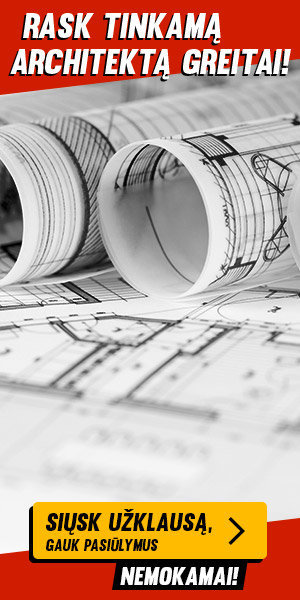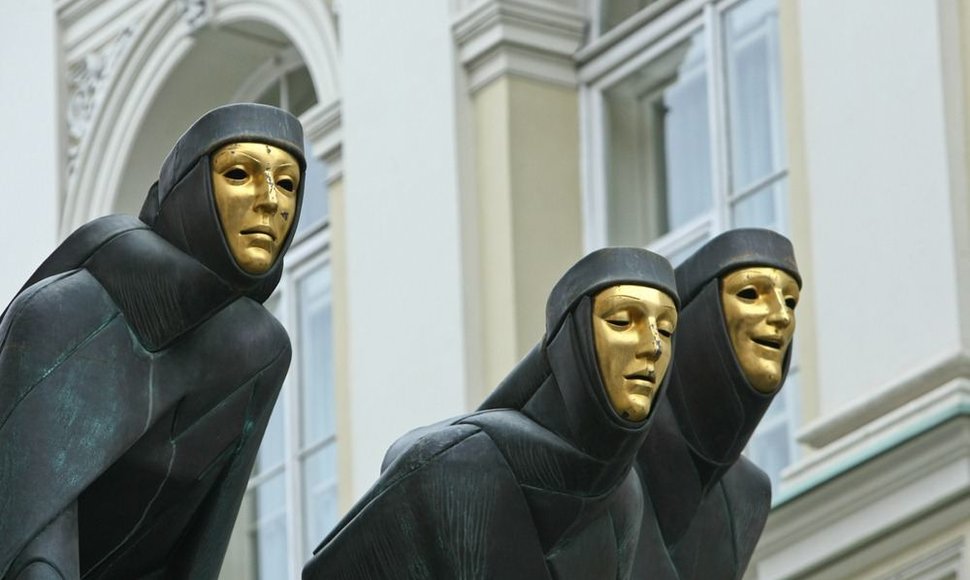His reflections on himself and his oeuvre has been put in an album published six months ago, “Stanislovas Kuzma.”
“I didn't know who I'd be”
“I can recall that special state – how old was I, three or four perhaps? I suddenly halt, all alone in a meadow, the sun is shining... A curious state – you feel that you are, that you are special, that someone addresses you, that something will happen to you. You don't know what, but something special, and you will become different.
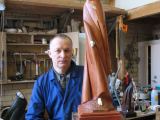 |
| Lietuvos dailininkų sąjungos nuotr./Stanislovas Kuzma |
“Then I, a kid, became concerned: Will I meet myself when I grow up... Will I know myself as a grown man? Will I speak to myself? I remember these elated states of a child. I remember grown-ups saying that this child would amount to something. I didn't know who I'd be.
“Later, things became clearer: To be someone means to learn something. My grandfather is a carpenter, I started assisting him early on. I'd be a carpenter, I thought. Then I noticed planes – I'd be a pilot. I saw a parachute – I'd be a parachutist. At school, I turned out to be a mediocre student. Not the fastest one, not the best, poor memory. Want to be an artist? But your writing is like hen's scribbles, you don't have a voice – no qualities to make something of you. There were even graphic artists who were better then me, I'd look at them and envy. But I had a strong urge to do something, to discover. That was my engine.”
On the origins of “Springs”
|
|
| Organizatorių nuotr./Versmė (Springs) |
“In August 1977, I went to my uncle's, a village on the bank of the river Lėvuo, home of my father and grandparents. I had just left hospital and was feeling very weak. It seemed that life was coming to an end, I was plagued with melancholy. I was strolling along the bank of Lėvuo, trying to inhale some of the nature's energy. Sun rays were penetrating into water, golden reflections jumped on the grass and sand. I was looking at the calmly flowing river water, springs bubbling on littoral sands, and melancholy slowly turned into a feeling of affinity with nature. I wished I could immerse myself into the stream and float together with swaying grass.
“The feeling materialized into a shape, as if a spirit had manifested by this physical movement. A vision for a sculpture emerged before my eyes, but melancholy did not pass – I still felt so bad that I couldn't have made the sculpture. But life is full of God's grace. In 1978, waking up from a successful heart surgery still in hospital, I discovered that the theatre was granted extra funding and the Nasvytis architects drew a design of how to put the inner yard of the old theatre under a roof, transforming it into a lobby with a water reservoir or a fountain. I remembered my vision on Lėvuo – and that was how the “Springs” came to be. Three muses with golden masks on the façade sort of extends into the lobby with “Springs.”
On small sculptures
“I feel elated when that special feeling comes, called inspiration. And for me, the straightest way to this state is small sculpture. I find myself in a different world, one of personal spaces.
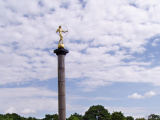 |
| Marek Dziwior nuotr./Shooter in Šiauliai Sundial Square |
“This kind of work is often spontaneous, it can emerge within several days. The idea, the spiritual and emotional charge, the sculpture form and matter – everything in fusion. The first visible impulse – the plastic idea, followed by contemplation. All these experiences go on inside, they are like a personal secret, but only until they become a three-dimensional form. You try to speak about what's most important, hoping you are not alone, that another person will understand you.
“You are perturbed by realization that true sculpture – now as before – is like an iceberg, most people admire its peak, but only the select few can see the profundity below. And if it appears that it cannot reach either, you are condemned to drifting on a melting floe. I know it's risky and I still venture – I did not go in search of a genius, I'm led by a restless nature.”
Life and works
Stanislovas Kuzma, one of Lithuania's most celebrated modern sculptors, passed away 10:30 AM, 14 August. He was 65.
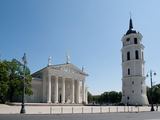 |
| BFL nuotr./Vilnius Cathedral |
Kuzma was born on 7 May 1947 in Panevėžys. He graduated from the Lithuanian Art Institute in 1973 and spent several years lecturing there.
Some three decades ago, Kuzma was brutally assaulted and beaten in a street. Doctors diagnosed him with sepsis and cardiac muscle inflammation. In 1978, he underwent a surgery, having two of his heart valves replaced. Kuzma was 31 at the time. The sculptor was suffering from after-effects of the assault until the end of his days.
He is most famous for his Muses on the façade of the National Drama Theatre, three sculptures on the pediment of Vilnius Cathedral, Shooter in the Sundial Square of Šiauliai. His Pieta stands in Antakalnis Cemetery, dedicated to the memory of the 13 January victims.
No less significant are Kuzma's religious works created over the last several decades: “Christ Resurrected” and “Mary with Baby Christ” in Elektrėnai Church, “Crucifix” in Vilkaviškis Cathedral, “Assumption” in Ignalina, “Crucifix” in Nida Church.
Kuzma also authored monuments for writer Jurga Ivanauskaitė, painter Birutė Almonaitytė, and several other late luminaries.
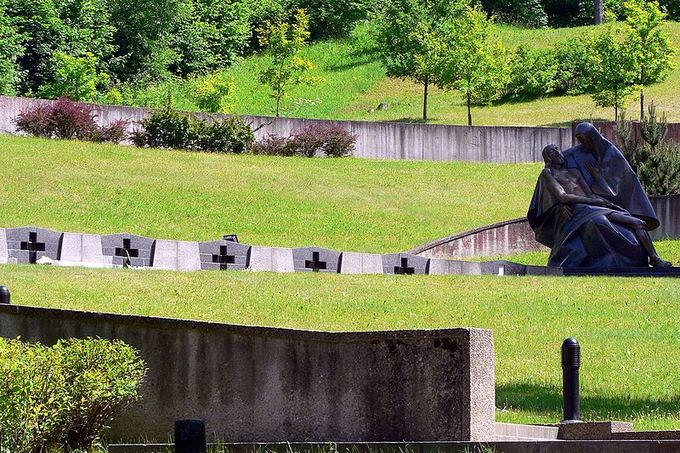 |
| Wojsyl nuotr./Pieta (1995) |

